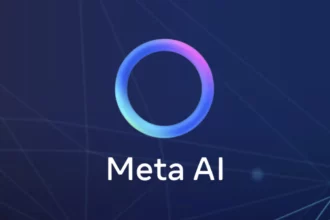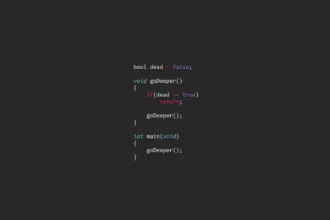Are you tired of your data being all over the place? Feeling like you need a magic wand to bring it all into a neat and organized format? Well, look no further! Introducing the MinMaxScaler, your new best friend in the world of data scaling. In this blog post, we’ll dive into the ins and outs of the MinMaxScaler, its applications, and why you absolutely need it in your life. Get ready to transform your data from chaos to clarity with just a few simple steps. So sit back, relax, and let’s make your data dreams come true!
Table of Contents
ToggleUnderstanding the MinMaxScaler
Embarking on the journey of data science, one encounters the critical process of data preprocessing. Here, the MinMaxScaler emerges as a knight in shining armor for data normalization. This technique is akin to a meticulous gardener who trims and shapes the hedges into a perfect linear symmetry, ensuring that every leaf – or in our case, data point – aligns within a harmonious scale of [0, 1] or [-1, 1].
Imagine a dataset as a diverse ecosystem. Just like in nature, where the giant redwood trees tower above a carpet of moss, datasets too can have features with widely varying magnitudes. The MinMaxScaler operates by taking the towering values and the modest ones and transforming them to a common ground where each feature’s relative difference is maintained, yet they all share the same scale.
Consider a dataset where the age of individuals ranges from 18 to 90 and their incomes span from a few thousand to millions. The MinMaxScaler takes these features and, through a formulaic dance of subtraction and division, scales them down. It subtracts the minimum value within the feature and divides by the range, ensuring that the shape of the original distribution remains untouched. The end result is a dataset where both age and income can be compared and contrasted on an equal footing.
| Fact | Explanation |
|---|---|
| Need for MinMaxScaler | It brings data within a standard range, typically 0 to 1, allowing for features to be scaled uniformly without altering the distribution’s shape. |
| Function of MinMaxScaler | By subtracting the minimum and dividing by the range, it preserves the distribution while scaling the features to a bounded interval. |
| Usage Scenarios for MinMaxScaler | It’s best applied when the boundaries of the data are known and can be contained within a specific range, compressing all inliers. |
| Example of Min Max Scaling | Rescaling age and income from their original range to a uniform [0, 1] scale without distorting the relative distances between values. |
By embracing the MinMaxScaler, data scientists ensure that algorithms that are sensitive to the scale of data, such as gradient descent-based algorithms and distance-based algorithms, can operate under optimal conditions. This scaling method, therefore, is not just a mathematical convenience; it is a strategic move to enhance model performance.
As we prepare to delve deeper into the practical applications and the rationale behind employing the MinMaxScaler, it’s essential to appreciate its role in molding raw data into a refined form that machine learning models can digest with ease. It’s a bridge between the raw, untamed world of data and the structured, analytical minds of algorithms, enabling them to perform at their best.
Application of MinMaxScaler
In the realm of data science, the MinMaxScaler emerges as a pivotal technique, tailor-made for the meticulous task of normalizing data within a distinct range. Unlike its cousin, the Normalizer class from Sklearn, which normalizes samples on an individual basis to unit norm, applying row-wise, the MinMaxScaler operates with a columnar focus. It takes each feature by the hand and gently rescales it, ensuring that the full array of data plays on the same numerical stage.
Consider a scenario where you’re armed with domain insights, knowing the exact boundaries within which your data should reside. In such cases, the MinMaxScaler becomes your tool of choice. It deftly scales every feature, aligning them uniformly within the range of [0, 1]. But let’s not forget the outliers — when negative values enter the fray, MinMaxScaler adapts, stretching the scale to cover a range of [-1, 1], ensuring every data point is accounted for without prejudice.
This scaling process is akin to fitting Cinderella’s glass slipper perfectly on her foot. It compresses all the inliers, those data points that huddle within the range, ensuring none are left out of the narrative. Through this transformation, the essence of the data’s story remains unchanged, yet the characters — our features — are more harmoniously aligned for algorithms to interpret.
Imagine a dataset as a diverse ensemble of instruments, each with its unique pitch and volume. Without normalization, this symphony could be discordant, with some instruments overwhelming others. MinMaxScaler conducts this orchestra, tuning each instrument to ensure a balance that allows for a harmonious performance. This is especially beneficial for algorithms that are sensitive to the scale of data, such as those based on gradient descent or that calculate distances between data points.
In the end, the MinMaxScaler serves as a bridge, a quiet enabler of harmony between raw data and the exacting demands of machine learning algorithms. It enhances model performance without fanfare, letting the data sing in a pitch-perfect tune that leads to insights and decisions that shape our digital world.
As we weave through the fabric of data normalization, the MinMaxScaler stands out, not only for its precision but also for its versatility in various scenarios. It is a trusted companion for data scientists and analysts who seek to lay a strong foundation for robust and reliable predictive models.
Why Do We Need MinMaxScaler?
Imagine a world where every player on a soccer field is granted an equal opportunity to showcase their skills, irrespective of their physical attributes. MinMaxScaler does something quite similar for numerical data in the realm of data science. It ensures that each feature of the dataset gets to play on a level playing field by transforming them to fit within a particular range—typically between 0 and 1. This is akin to giving every player a standard pair of boots so their true talents can shine through without the hindrance of inadequate equipment.
The necessity of MinMaxScaler becomes evident when we delve into the mechanics of various machine learning algorithms. Many algorithms, like Support Vector Machines and k-means clustering, calculate distances between data points. If one feature ranges between 0 and 1000 while another ranges between 0 and 1, the distance calculations will be dominated by the larger scale, skewing the algorithm’s performance. By scaling features to a similar range, MinMaxScaler ensures that each attribute contributes equally to the final outcome, allowing for a harmonious symphony of data points that algorithms can interpret with greater accuracy.
This scaling technique is particularly beneficial when dealing with features that carry a wide array of values. In such cases, not scaling could lead to a model that is insensitive to the subtleties of smaller valued features. By implementing MinMaxScaler, we magnify the voice of each feature so that none is drowned out by the other’s dominance. The resulting equilibrium is crucial for predictive models that hinge on the delicate balance of inputs.
The application of MinMaxScaler is also a testament to its adaptability. It can be tuned to scale data within a range of [0, 1] or [-1, 1] for data that include negative values. This flexibility ensures that the scaler fits the data like a glove, providing the snug fit required for the most effective analysis. Moreover, its use is underpinned by the predictability of its behavior, as it does not distort the data but rather rescales it, maintaining the original distribution but in a new, algorithm-friendly range.
While MinMaxScaler is not a one-size-fits-all solution, it is a critical tool in the data scientist’s arsenal, offering a simple yet effective way to normalize features and bring them onto common ground. Its role is pivotal in pre-processing data for algorithms that would otherwise be perplexed by the varying scales of raw data. MinMaxScaler is the unsung hero, quietly ensuring that the data plays well with the complex machinery of machine learning algorithms.
Thus, as we prepare the data for its journey through the intricate pathways of our chosen algorithms, MinMaxScaler stands as a faithful guide, ensuring that each feature is given its due diligence and every model its best chance at success.
Disadvantages of MinMax Scaling
While the MinMaxScaler has proven to be a quintessential tool in the toolkit of a data scientist, it carries within its mathematical elegance certain inherent limitations. Much like a delicate piece of machinery that operates optimally under controlled conditions, MinMaxScaler can falter in the presence of outliers. These statistical anomalies are akin to rogue waves in a calm ocean, capable of skewing the entire scaling process. When these outliers are present, the other data points are compressed into a smaller scale, much like the majority of an orchestra’s instruments being tuned to accommodate a single out-of-tune violin, thereby losing their distinctiveness and potentially valuable information.
Sensitivity to outliers is a significant concern; consider a dataset where the majority of values are nestled comfortably within a predictable range, save for a few extreme values. These outliers stretch the scale to its limits, and as a consequence, the bulk of the data is pushed towards the lower end of the spectrum. In such scenarios, the MinMaxScaler may inadvertently amplify the impact of the outliers while minimizing the variations amongst the more typical values, leading to a skewed representation of the true dataset.
Another challenge that MinMaxScaler faces is its limited range. The scaler traditionally operates within the bounds of 0 and 1, which while often suitable, may not always be the best choice for every dataset. In certain situations, a different range might be more appropriate, and the inflexibility of the MinMaxScaler’s default setting can be a constraint that hinders the effectiveness of the data normalization.
The repercussion of these constraints is most pronounced when we apply machine learning algorithms that depend heavily on feature scaling. Algorithms like K-means clustering or principal component analysis, which are sensitive to the scales of the features, can yield less than optimal results when fed with data that has been inappropriately squashed by the MinMaxScaler.
Despite these drawbacks, the MinMaxScaler remains a popular choice due to its simplicity and the ease with which it can be implemented. However, it is crucial for practitioners to be mindful of its limitations and consider alternative scaling methods, such as standardization or robust scaling, when dealing with datasets that do not play well with the MinMaxScaler’s constraints.
By understanding the disadvantages of MinMaxScaler, data professionals can make more informed decisions about the preprocessing steps they choose, ensuring the integrity of their models and the accuracy of their predictions.
Does MinMax Scaler Normalize Data?
In the quest to unravel the tapestry of data, MinMaxScaler emerges as a pivotal tool in the normalization process. Picture a landscape where the scale of mountains varies vastly; some are but hillocks while others tower like Everest. In a similar vein, data points in a dataset can have wildly different scales, leading to a skewed perception of their importance in predictive modeling. The MinMaxScaler, akin to a great leveler, scales the data values to a uniform range of 0 to 1, ensuring that each feature contributes equally to the analysis without prejudice.
Normalization is a critical step in data preprocessing, particularly when features in a dataset are measured on different scales. Without this leveling, some features would dominate simply due to their larger numerical values, potentially misleading the model. By applying MinMaxScaler, we transform the features to a common scale, mitigating the risk of bias and enhancing the harmony and balance within the dataset.
Imagine a dataset as a chorus, with each feature a voice. Without normalization, the loudest voices would drown out the rest, distorting the melody. MinMaxScaler ensures each voice is heard clearly and at the right pitch, contributing to a unified harmony that accurately reflects the complexity and nuance of the data. It’s a vital step for models that are sensitive to the scale of data, such as neural networks and algorithms that utilize distance calculations, like K-Means clustering or K-Nearest Neighbors.
When we delve into the realms of data science, we often encounter variables that, left to their raw magnitudes, could introduce a bias that sways the predictive model in an unintended direction. MinMaxScaler is the embodiment of equity in the preprocessing phase, ensuring that each variable, whether it’s a whisper of wind or the rumble of thunder, has an equal chance to influence the outcome.
It’s important to remember, as with any tool, MinMaxScaler must be wielded with care. Its sensitivity to outliers requires vigilance; an outlier can dramatically affect the scale and consequently, the normalized values. Nevertheless, when the data is relatively free of these extreme values, or when the domain knowledge affirms the bounds of the data, MinMaxScaler is an excellent choice for setting the stage for algorithms to perform at their best. It is this strategic application that makes MinMaxScaler not just a function, but a foundational element in the art of machine learning.
Thus, MinMaxScaler does more than normalize; it democratizes data, giving each feature a voice of equal volume and cadence in the symphony of predictive modeling.
Conclusion
The journey through the realms of data normalization is akin to finding the perfect balance in an artist’s palette—every color must be present in just the right amount to create a harmonious masterpiece. Similarly, the MinMaxScaler functions as the meticulous artist in the data preprocessing domain, ensuring that each feature is given equal opportunity to influence the final analysis. Its simplicity belies its potency, as it effectively scales numerical values to a uniform battleground where each can make its presence known without overshadowing the others.
Yet, for all its virtues, the MinMaxScaler is not without its Achilles’ heel. Much like a delicate scale that can be tipped by the slightest weight, the MinMaxScaler is sensitive to outliers. These anomalies, the renegades of the data world, can dictate the scaling process to such an extent that it skews the representation of the entire dataset, leading to a potential misinterpretation of the results. Moreover, its fixed range, typically a canvas stretching from 0 to 1, may not suit every dataset’s narrative, especially when the data’s story extends beyond these bounds.
Understanding when to deploy the MinMaxScaler is much akin to a chef knowing just the right seasoning to enhance a dish without overpowering it. It is most effective when the data’s upper and lower boundaries are as clear as the rules of a chess game, defined by domain knowledge such as the 0 to 255 intensity levels in digital color representations.
In the grand scheme of data preprocessing, the choice between StandardScaler and MinMaxScaler is dictated by the nature of the data’s dance. Should the features pirouette to the tune of a Normal distribution, the StandardScaler is your lead dancer. However, when the choreography calls for a performance confined within known stage boundaries, the MinMaxScaler takes the spotlight, ensuring that every step is noted within the defined range of [0, 1] or [-1, 1] if negative values step into the routine.
Thus, while the MinMaxScaler is a key player in the data analyst’s toolkit, it is the wisdom of the analyst that decides when and how to use it. It is a tool that, like a compass, guides but does not dictate the journey. This understanding allows for the strategic application of the scaler, ensuring that the data’s story is told as accurately and compellingly as possible.
As we continue to navigate the vast seas of data analysis, let us carry with us the knowledge of the MinMaxScaler’s strengths and limitations. In doing so, we can steer our machine learning algorithms toward greater discoveries, ensuring that each feature, each variable, each data point is given its due in the tapestry of insights we weave.
Q: What does MinMaxScaler() do?
A: MinMaxScaler subtracts the minimum value in the feature and then divides by the range. The range is the difference between the original maximum and original minimum. MinMaxScaler preserves the shape of the original distribution.
Q: Why do we need MinMaxScaler?
A: MinMaxScaler shrinks the data within the given range, usually of 0 to 1. It transforms data by scaling features to a given range. It scales the values to a specific value range without changing the shape of the original distribution.
Q: Does MinMaxScaler normalize data?
A: Yes, MinMaxScaler can be used to normalize data. It can be applied to a dataset directly to normalize the input variables. By default, it scales values to the range of 0 and 1.
Q: What are the disadvantages of the MinMaxScaler?
A: The MinMaxScaler has two main disadvantages. Firstly, it is highly sensitive to outliers, meaning that outliers can significantly affect the scaling process and distort the scaled values for the entire dataset. Secondly, the scaling range of MinMaxScaler is fixed, typically between 0 and 1, which may limit its usefulness in certain scenarios.





